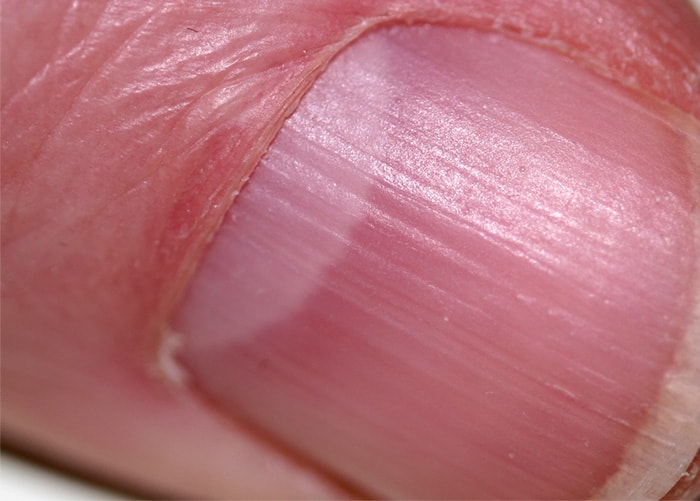Lunula or also known as fingernail moon is rounded shadow at your nail’s base. The term is Latin, which means little moon. The place where every nail starts growing is renowned as matrix. It’s where new cells are made, which make up the nails. Lunula is basically a matrix’s part.

What is Lunula?
While it seems that the lunula is a part of the nail, the truth is that this is sitting above the skin just below your nail. This serves as the protective covering of vulnerable blood vessels located there. All people have lunula but this is not visible all the time on all fingers, most of whom can just see this on the thumbs. Your lunula plays a crucial role in the fingernails’ shape as well as their growth. Any damage to the lunula can change the growth of your nails, if it does grow at all.
Reasons Why You Don’t Have Lunula on Your Fingernails
If you can’t see lunula on your fingernails, it does not always mean that something’s wrong with your overall health condition. There are times you might only be able to see lunula on thumbs or not on all of your fingers. In such cases, lunula is hidden under the skin.
What Are the Possible Causes of An Absent Lunula?
There are many possible causes of an absent lunula. One cause could be a deficiency in iron or other minerals. This can lead to a lack of oxygen in the blood, which can prevent the growth of the lunula.
Another possible cause is malnutrition, which can also lead to a lack of oxygen in the blood and poor health overall. Poor circulation can also be a factor, as it can inhibit blood flow to the fingers and toes, preventing the growth of the lunula. Injury or illness can also be a cause, as they can disrupt normal cell growth and development.
Smoking and exposure to harmful chemicals can also lead to an absent lunula.

Some Abnormal Lunula Features
Pyramidal Lunula
Pyramidal lunula happens when lunula on fingernails form in triangular shape. More often than not, it’s caused by improper manicure or another type of trauma to fingernails. Lunula may stay this way until nails grow out and tissues heal completely.
Azure Lunula
It describes the phenomenon where lunula on fingernails takes on blue discoloration. It may indicate Wilson’s disease, which is also referred to as hepatolenticular degeneration. It is also an inherited rare genetic disorder, which causes excess amount of copper that accumulate in the brain, liver, and some vital organs. The symptoms that occur with Wilson’s disease other than azure lunula are uncontrolled movements, speech problems, buildup of fluid in the legs, discoloration of golden-brown eye, jaundice, abdominal pain, lack of appetite, and fatigue.
Red Lunula
Lunula that is red in color is referred to as red lunula, which may indicate various conditions that might affect your health significantly. Red lunula may appear in people who are experiencing with some health issues including carbon monoxide poisoning, psoriasis, chronic hives, cirrhosis, COPD or chronic obstructive pulmonary disease, heart failure, and collagen vascular disease. Such conditions must be treated by doctors. Therefore, it is important to contact your doctor once you develop red lunula to make sure that there is nothing serious with your overall health condition. Also, for you to know the treatments possible to avoid red lunula.
What It Means for Your Health
Based on a published study, there are three ways that the lunula gives you warning of possible health issues: through its color, shape, and size. A healthy and normal lunula is ivory-colored, half-moon shaped, and occupies about a fifth of the nail. If you ever notice any changes to the lunula, it is important to schedule an appointment with a healthcare practitioner or doctor.
Size of the Lunula
As stated earlier, your lunula must be roughly a 5th of your nail. It may indicate trouble if it is any smaller or bigger than this.
- Macrolunula – Here, the lunula is enlarged or bigger. For certain ethnicities, specifically those with Indian descent, it is normal. If not, this can signify some endocrine disorders like hyperthyroidism.
- Anolunula and microlunula – Here, the lunula can be small or simply absent all in all. Although a microlunula is often normal for those of African descent and could be related to age, this may signify other concerns like cardiovascular atherosclerosis, nail diseases, chromosomal diseases, malnutrition, iron deficiency anemia, and endocrine disorders.
Shape of the Lunula
The lunula affects how your nail grows that is why if it has an off shape, there is a chance that the nails that will grow will be misshapen as well. if something goes wrong, the lunula may change from the usual shape of half-moon to something square or triangular even.
Color of the Lunula
The lunula, also called lunar dyschromia, must have an ivory color though people with darker skin tone tend to have a lunula with blue-ish tinge. If you notice a different color to your lunula, it is important to consult your doctor to ensure that you are not at bigger risk for illnesses associated to specific lunula colors.
Why Is the Lunula White
Your nails are formed from keratin protein that is produced through a layer of live tissue at the nail matrix. The crescent or half-moon shape is called Lunula. As part of the nail matrix, it pokes out from under the flesh of your finger.
Lunula appears to be whitish due to the thickened epidermis beneath the matrix that blocks the pinkish colored underlying blood vessels.
Point often overlooked is the absence of lunula in our nails. Have you checked it out right now? Wondering how to get it back if it is missing? Just sit back and relax.
How To Get Lunula Back
Up to the present time, there isn’t much research or established facts about how to get lunula back. However, it is important to stress out that the answer on how to get the lunula back to its perfect look depends on the main cause of losing it.
In most cases, lunula may be damaged due to chemicals or malpractices. Healing time frame for this scenario is at least 3 months with proper hygiene. This is also supported by the 1996 paper in the Journal of American Academy of Dermatology, which suggests that lunula gets back after 14 weeks. What to do with this? Just make sure to always make it clean and simply leave it as it is.
Malnourishment, and vitamin and nutritional deficiencies are also perceived as among the common causes of losing lunula. Thus, taking vitamins or food supplements rich in Vitamin B12, iron, iodine and Vitamin E produce good results in just several weeks.
Why Lunula Disappear?
In worst cases, the disappearance of your lunula or the color changes of your entire nail can be a sign of an underlying condition. For instance, nails become pale blue for diabetics and red nails can be a sign of heart failure or carbon monoxide poisoning. If you are experiencing other unusual symptoms, make sure to visit your doctor for physical examinations.
Generally, lunula becomes a bit smaller or even absent during the old age. Growth rate of your nails also slows considerably during this stage.
Whether these conditions seem applicable to you, it will be better to observe other factors based on your actual experiences that may contribute to how your lunula looks.
Conclusion
In many cases, having no lunula on your fingernails is not a sign of something that is serious. But, if you are not seeing lunula or if you are seeing some changes to the color or shape of your lunula along with some symptoms, you would want to consult your physician as soon as possible. This will help you ensure that you do not have any underlying health condition that should be treated. Consulting your doctor will also let you know what actions to do about having lunula on your fingernails if it’s something serious.

